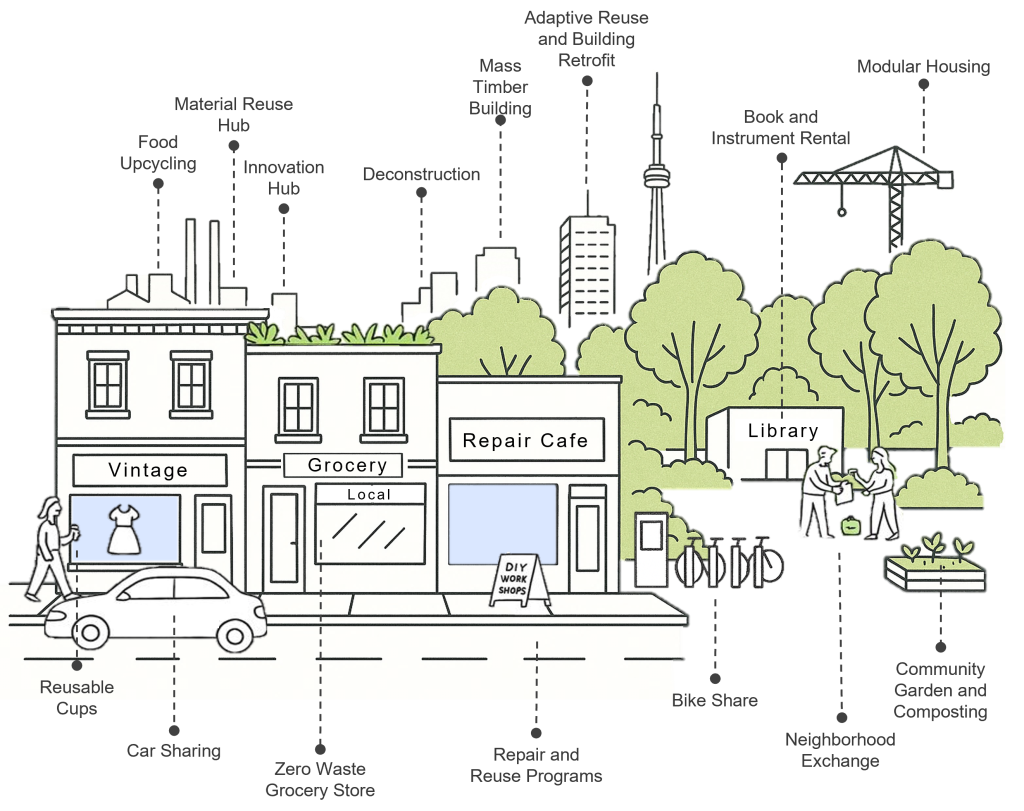
Over the next decade, Circular Toronto is implementing the City’s circular economy transition to reduce waste and encourage sustainable consumption. This Road Map will deliver incentives, supports and programs for residents and businesses that make circular solutions easy and accessible. It will also lead by example, embedding circular practices into its own operations and addressing barriers to create an environment for businesses and communities to pursue circular innovations.
The Road Map is organized around five Strategic Directions that provide the framework for implementation:

The City launched the Circular Economy Road Map project in early 2024. The project was completed in four phases. Each phase involved comprehensive engagement with interested parties, including Toronto residents, industry subject matter experts, City staff and the project’s Community Advisory Committee.
The Phase 1 Circular Economy Road Map Report provides information about the activities and outcomes of the work completed from April to September 2024, which focused on:
The Phase 2 Circular Economy Road Map Report provides information about the activities and outcomes of the work completed from September 2024 to January 2025, which focused on:
The Phase 3 Circular Economy Road Map Report provides information about the activities and outcomes of the work completed from January to June 2025, which focused on:
The Community Advisory Committee (CAC) was a panel of community members and residents who were selected through a civic lottery to provide feedback, opinions and guidance to the City on the Road Map project.
The CAC met virtually four times over the course of the project to review and provide feedback and input at key decision points throughout the research and development of the Circular Economy Road Map, working closely with the City’s project team and one another. CAC members were compensated with an honorarium for their contribution to the project. The input from CAC members helped ensure that the final Circular Economy Road Map was informed by the diverse lived experiences of Torontonians.
As part of its journey towards a circular economy, the City has completed a research project called Baselining for a Circular Toronto. Check out the Highlights Summary Document for key findings from the study.
The Baselining for a Circular Toronto project is one of the first of its kind in Canada and explores the current state of circularity in Toronto. The study:
Baselining for a Circular Toronto engaged more than 150 key stakeholders, including City staff (from approximately 20 divisions), the public Circular Economy Working Group, other orders of government and government agencies.
The project involved three phases:
To receive information and updates related to sustainable consumption and circular economy initiatives and opportunities, subscribe to Circular Economy E-Updates.